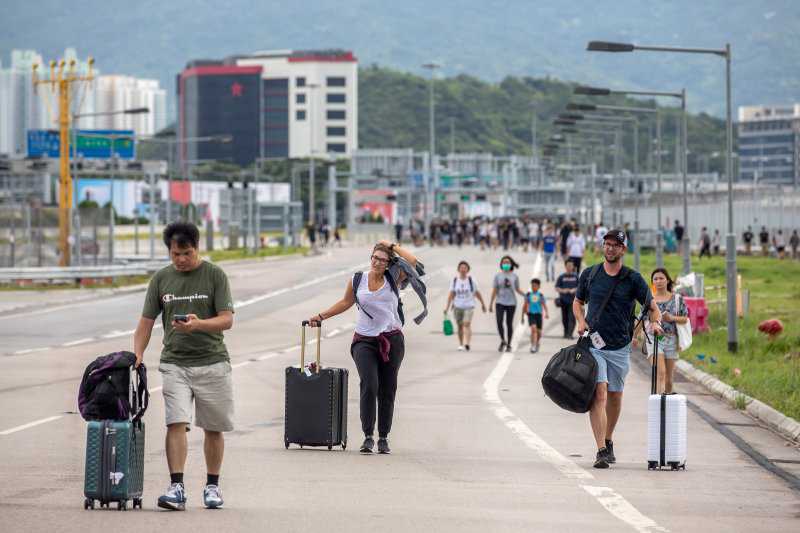Traveling to Hong Kong? Here's What You Need to Know

Image collected
Protests have been roiling Hong Kong for the past five months, but a significant escalation this week has seen public transportation shutdowns, violent protests across the territory and, as of Wednesday, foreign universities recalling their students out of fears for their safety.
Thousands of arrests have been made, hundreds have been injured, and countless petrol bombs have been thrown since the start of the unrest. Schools were suspended this week and many universities—which have become literal battlegrounds between protesters and police—have cancelled lectures for the remainder of the semester.
Businesses have been badly affected. Scores of shops have been ransacked, vandalized and burned, including branches of Starbucks. Malls have also been attacked and routinely bring the shutters down early to avoid trouble.
The U.S. has raised the travel advisory warning for Hong Kong to level two, calling for visitors to exercise “increased caution.” Canada and Australia have also upped their travel alerts, and the U.K. has warned that “the situation around protests and public gatherings can change quickly.”
If you’re planning on traveling to Hong Kong, here’s what you need to know.
Getting to and from the airport
The Airport Express, the rail service that connects the airport to the city in 22 minutes, is still running. But it has experienced delays and frequently skips intermediary stops. Roadblocks on major highways have also caused the rerouting of some airport buses.
After protestors blockaded the airport in August, the Airport Authority heightened security checks. Currently, only those carrying an air ticket for a flight in the next 24 hours, and a valid travel document, are allowed to enter the departure hall. Travelers are also advised to allow sufficient time for travel to the airport.
Transport disruptions
The city’s main means of transportation is the train network. Known as the Mass Transit Railway (or MTR), it has come under heavy attack by protesters. Trains and stations have been set on fire, petrol bombs thrown into train compartments, facilities severely damaged and objects hurled onto the tracks.
In recent weeks, trains have been maintaining limited services, with many stations and sections of major lines frequently closed due to vandalism. Travelers can expect lengthy delays and overcrowding, especially during morning and evening rush hour. Service announcements are made in real-time on the MTR’s Twitter page, and the MTR website provides an overview of service arrangements.
Dozens of bus routes are regularly suspended or diverted when protesters occupy major roads and highways. Booking a taxi or an Uber may be the most reliable way to get around, but they can be very difficult to find during major protests. Be prepared to be flexible on pick-up and drop-off locations.
It can dangerous to attempt to drive through or circumvent a barricade: motorists have been dragged from their cars and beaten for trying to do so. Protesters have also thrown petrol bombs at vehicles ignoring roadblocks.
Source: https://time.com
Previous Story
- Emirates opens dedicated check-in terminal for cruise passengers...
- Pampered pooch: This hotel in Colorado is hiring...
- Emirates brings in no-nonsense referee for bad in-flight...
- Global Entry: A Travel Investment Well Worth $100
- How Will Airports Keep Up With Travel Demand?
- Endless queues a thing of the past? Beirut...
- A road less travelled or the well-beaten track?...